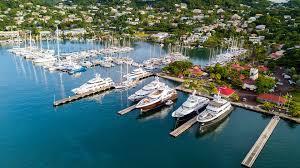The city of Port-Louis, formerly known as Blavet, was founded because of its exceptional natural location. It inherited a privileged strategic position along with the duty to protect.
In the Middle Ages, Port-Louis was used as a maritime outpost for 2 river towns: Hennebont and Pont-Scorff. It was only in 1618 that the town was named “Fort-Louis” and then “Port-Louis” in honor of King Louis XIII, who wanted to build a fortified city to protect the kingdom from English, Spanish or Dutch enemies . The citadel of Port-Louis underwent several phases of construction. They started under the direction of Jacques Corbineau, who built the walls and barracks between 1616 and 1622.
Then, in 1636 (the Thirty Years’ War), it was the turn of the logs of the parapets, the moats, the security bar, the secret way and the grandstands. The walls were built between 1648 and 1653 and encircled the peninsula. In 1654, the Duke of Meilleraye founded the Madagascar Company, which would later become the East India Company. After settling in Le Havre, the company moved to Port-Louis in 1664, a prosperous period for the city. The East India Company closed its doors in 1979. During the Revolution, Port-Louis took the name “Port Liberté” and the citadel served as a prison for the Chouans.
The citadel’s most famous prisoner must be Napoleon III, who spent a brief period there in the early 18th century. In the late 18th century, the sardine economy developed following the unification of merchants. Under the reign of Louis Philippe (1830-1848), the city experienced a revival with the discovery of oil-based canning methods, a technique that revived the sardine trade. Sardine and tuna fishing, the sale of fresh fish, and the construction of canneries spurred the city’s redevelopment. During the 20th century, Port-Louis faced competition due to the development of the Keroman fishing port in 1927. After World War II, activity in Port-Louis came to a halt until the early 1980s, during which recreational boating developed with the arrival and mooring of the first ships of this new era in the port. This activity continued and changed the shape of the dock until 2010, with an extension that can now accommodate 450 vessels in docks.









